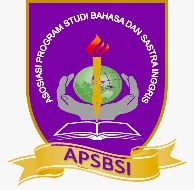THE EFFECTIVENESS OF SEND A PROBLEM TECHNIQUE FOR TEACHING WRITING AN ANALYTICAL EXPOSITION TEXT (A Quasi-Experimental Study of the Eleventh Grade Students of SMA N 8 Semarang in the Academic Year 2015/2016)
Abstract
The aim of the study is to find out whether teaching writing analytical exposition text by using Send a Problem technique is effective or not for Senior High School students. In the working hypothesis (H1), “There is significant difference in students’ writing achievement between those who are taught using Send a Problem and those who are taught using conventional way.†Meanwhile, in the null hypothesis (Ho), “There is no significant difference in the students’ writing achievement between those who are taught using Send a Problem and those who are taught using conventional way.â€The population of this study was the eleventh grade students of SMA Negeri 8 Semarang in the academic year 2015/2016. The total number of the sample was 60 students that consisted of 30 students of class XI IS 4 as the experiment group who were taught using Send a Problem technique and 30 students of class XI IS 5 as the control group who were taught using conventional way. The design of this study was a quasi-experimental study. The data were collected through the writing test. In the pre-test, the mean score of the experimental group was 62.80 and the control group was 62.77. After the treatment, the result of post-test of the experimental group was 75.57 while the control group was 68.57. The independent sample t-test used by the writer showed that there was a significant difference between post-test of control group and experimental group. Lastly, teaching writing analytical exposition text using Send a Problem technique is effective than conventional way. English teachers are suggested to concern better in their technique variety in teaching writing any kind of texts especially analytical exposition text.References
Al-Rahman, Zikr-Ur. 2004. Modern Teaching Methods and Technic. New Delhi: Anmol Publication PVT. LTD.
Anderson, M. and Anderson, K.1997. Text Types in English. South Yarra: MacmillanEducation Australia PTY LTD.
Arikunto, S. 2006. Prosedur Penelitian: Suatu Pendekatan Praktik (Edisi Revisi). Jakarta: Rineka Cipta.
________. 2010. Prosedur Penelitian Suatu Pendekatan Praktik. Jakarta: PT. Rineka Cipta.
Brown, H. D. 1981. Affective Factors in Second Language Learning. New York: Oxford University Press.
________. 1988. Understanding Research in Second Language Learning. Cambrige: Cambrige University Press.
________. 2001. Teaching by Principles: an Interactive Approach to Language Pedogogy. Second Edition. New York: Longman.
________.. 2004. Language Assesment Principles and Classroom Practices. New York: Pearson Education.
Brown, J.D. and Bailey, K.M. 1984. A Categorical Instrument fo Scoring Second Language Writing Skills.
Budi, Wahyu Setia.2010. The Use Of “Indonesia Now†Video As A Medium To Improve Students’ Mastery In Writing Analytical Exposition Text (An Experimental Study At SMA N 1 Tegal).UnpublishedFinal Project of the Degree of Sarjana Pendidikan Semarang StateUniversity.
Christensen, Thoger Lars. 2001. The New Handbook of Organizational Communication: Advances in Theory, Research, and Methods. Calif: Sage Publications,Incorporated.
Depdiknas. 2006. Kurikulum Tingkat Satuan Pendidikan (KTSP). Jakarta: Depdiknas.
Djuhari, O. S. 2007. Genre. Bandung: Yrama Widya.
Gerot, L and Wignell, P. 1994. Making Sense of Functional Grammar. New SouthWales: Antipodeon Educational Enterprises.
Graham, Steve and Dolores Perin. 2007. Writing Next: Effective Strategies to Improve Writing of Adolescents in Middle and High Schools. New York: Alliance for Excellent Education.
Harris, D. P. 1969. Testing English as a Second Language. New York: McGrawHill Book Company.
Himawati, Ivone. 2011. The Use of Round Robin Technique in Teaching Writing Hortatory Expositon Text (An Experimental Study at the Grade XI of SMA Negeri 1 Pekalongan in the Academic Year 2010/2011). UnpublishedFinal Project of the Degree of Sarjana Pendidikan Semarang StateUniversity.
Hyland, K. 2003. Second Language Writing. Cambridge Language Education.Edited by Jack C. Richard.
Isaac, S. and Michael, W. B. 1971. Handbook and Research and Evaluation: for Education and the Behavioral Sciences. San Diego, California: EDITS Publishers.
Kagan, S. (1989, 1992). Cooperative learning resources for teachers. San Capistrano, CA: Resources for Teachers, Inc.
________. 2004. Cooperative learning: Building Communicative Class. SanClemete.
Kerlinger, F.N. 1965. Foundation of Behavioural Research. New York: Holt Rinehart and Winsron Inc.
Milis, Barba, J. Active Learning Strategies in Face to Face Courses. The University of Texas at San Antonio.
Nirmala, Nirna. 2011. The Effectiveness of Pairs Check Activity to Improve the Students’s Skill in Writing Analytical Exposition (An Experimental Study of the Eleventh Grade Students of SMA Negeri 1 Pemalang in the Academic Year of 2010/2011). UnpublishedFinal Project of the Degree of Sarjana Pendidikan Semarang StateUniversity.
Nunan, D. 1989. Designing Tasks for the Communicative Classroom. Cambridge: Cambridge University Press.
Oshima, Alice and Ana Hogue. 1999. Writing Academic English. Longman: Pearson Education.
Peha, Steve. 2002 a. The writing process notebook. Online. [Accessed 01/16/12]Available at http://zzwriter.com/2010/10/19/the-writing-process-notebook-by-steve-peha/.
Priyana, et.al. 2008. Interlanguage: English for Senior High School-Studi dan Pengajaran. Jakarta: Departemen Pendidikan Nasional.
Saleh, M. 2001. Pengantar Praktik Penelitian Pengajaran Bahasa. Semarang: IKIP Semarang Press.
________. 2012. Research in English Language Teaching. Semarang: Widya Karya.
Siahaan, S. and Shinoda, K. 2008. Generic Text Structure. Graha Ilmu.
Slavin, R. 1995. Cooperative Learning. Boston: Allyn and Bacon.
Suci, Reni Anggia. 2010. The Senior High School Students’ Ability in Writing Hortatory Exposition Text (A Case Study of Eleventh Grade Students of SMA Muhammadiyah 1 Pekajagan Pekalongan in the Academic Year of 2009/2010). UnpublishedFinal Project of the Degree of Sarjana Pendidikan Semarang StateUniversity.
Sudjana. 2005. Metoda Statistika. Bandung: Tarsito.
Tessema, Kedir Assefa. 2005. Stimulating writing trough project-based tasks.English Teaching Forum, 43/4. Page 22-28.
Tinambunan, Wilmar.1988. Evaluation of Student Achievement. Jakarta: P2LPTK.
Winer, B.J, 1962. Statistical Principles in Experimental Design. New York: McGraw-Hill Book Company.
Wright, A. 1976. Visual Materials for the Language Teacher. London: Longman Group, Ltd.
Zamel, V. 1982. Writing: The Process of Discovering Meaning. TESOL Quarterly, 16, 195-209.


_.jpg)
_.jpg)




